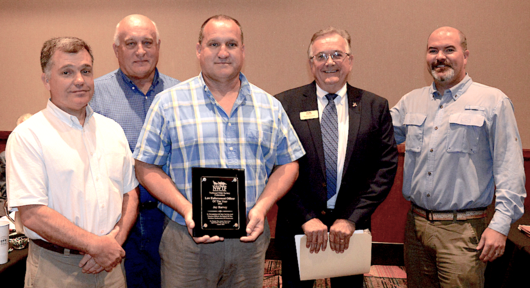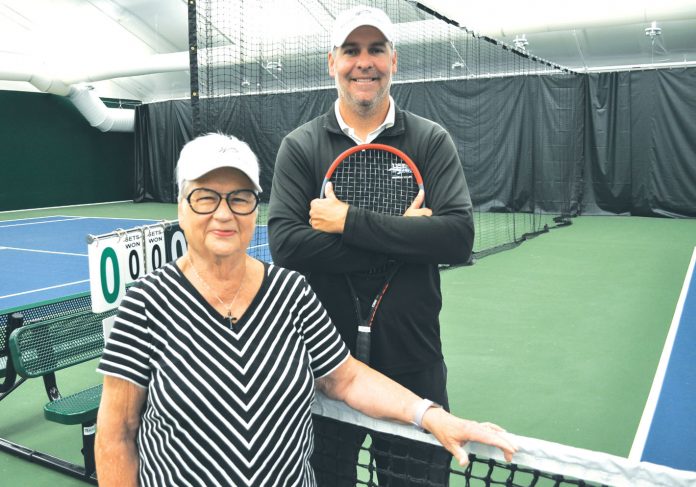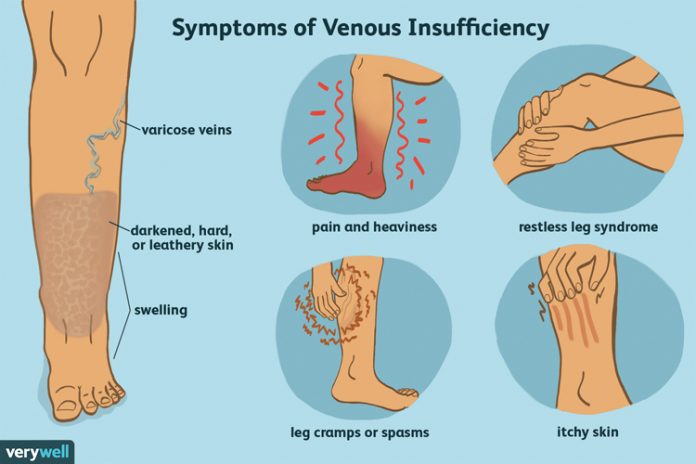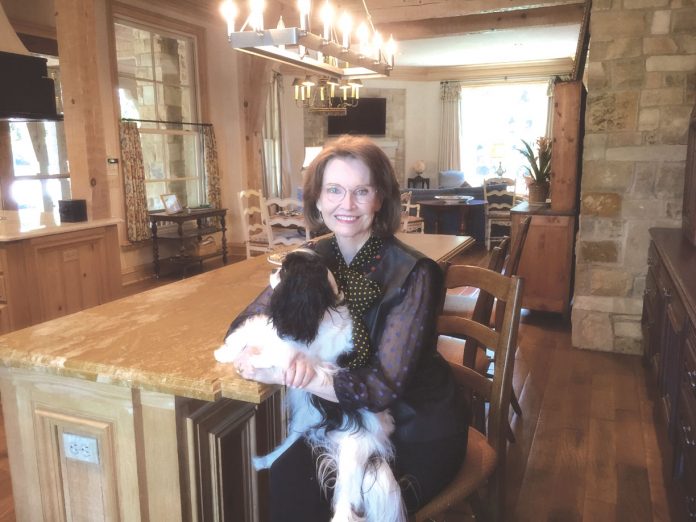Join the Museum for a unique happy hour experience, featuring wines from Boardwalk Distribution and a tasting class from expert Adam Rott. Guests will enjoy new and exciting themed drinks while mingling inside the Museum. Admission is $25 online or $30 at the door. Admission includes live music featuring 2015 The Voice contestant, Chase Kerby, a drink flight, tasting class, featured “Six Shooter Sangria” cocktail and hors d’oeuvres. Tickets may be purchased at https://nationalcowboymuseum.org/event/saloon-series-4/
National Cowboy & Western Heritage Museum, 1700 Northeast 63rd Street in Oklahoma City.
Patrons must be 21 years or older to attend.
National Cowboy & Western Heritage Museum Saloon Series set for October 17
Can you trust your roofer?
Story by Susan Slater
How Seniors Can Trust They’ve Found a Reputable Roofer
A lot of companies say they specialize in working with seniors. But Dennis Helm, of Smooth Finish Roofing & Construction, shows it.
Dennis is an industry partner and a member of OKALA (Oklahoma Assisted Living Association). He also has industry partnerships with several important senior organizations: The Oklahoma Senior Journal, Senior GuidePost, and The VillagesOKC. When Dennis says he enjoys working with seniors and wants to help them, he means it!
Dennis has been a senior advocate for as long as he’s been a business owner of Smooth Finish. He came about this from a place of caring for those who may be vulnerable to scammers because of difficulties he faced as a child (see article page ?? – in main section).
How Smooth Finish can help seniors
1) If you are working with a senior who would like to stay in their home, Smooth Finish can install a good-quality roof on their home that will last.
They can also help with other repairs and modifications on the homes of seniors who want to age in place. Besides roofing, Smooth Finish can do ceiling leak repair, guttering, siding, garage doors, fencing, painting, and more.
2) If you have a client who is moving into a senior living center and needs to sell their home, they may likely need a new roof or other repairs. Smooth Finish will do excellent work at a fair price, so your client’s home can pass all the inspections required for a sale.
3) Smooth Finish is not only certified and licensed* to do roofing for residential homes, but for senior living facilities as well.
Owner Dennis Helm—a true senior advocate
With his sincere desire to help seniors, Dennis always works to encourage people to use only local, licensed, and insured roofing contractors with hundreds of verifiable references. There are just too many terrible stories of things going wrong when people don’t.
Warning: roofers may not be who they seem to be!
“I’ve heard it many, many times,” Dennis says, “most people don’t trust roofers. That’s because in this industry there are a lot of fly-by-night roofers. They come in town, start a ‘company,’ get magnets on their car, and in 24-hours they look like a legitimate business. But they’re not.”
Unreliable scammers always rush into town after a storm has hit to solicit people who need roofing services. These unscrupulous “companies” many times will claim to be local, even though they’re not, and may go to great lengths to look like they’re hometown guys.
Dennis tells about having a man from out of town contact him after a bad storm hit the Oklahoma City area. This man wanted to “buy” the Smooth Finish company name, and use Dennis’s address and phone number for six months. He offered a good price, too! He wanted to appear to be a local, established company when soliciting roof jobs.
Dennis warns people to not be fooled. He says, “I wasn’t about to go for that deal, but other companies will.” He continues, “I want people with roofing needs in Oklahoma City to rest at ease. I want them to know that when they use Smooth Finish Roofing & Construction, they’re getting an honest, reputable company. I’m a lifelong resident and have 32 years expertise in this business.”
Ask for licensing numbers and for references, and then check them out! Dennis explains that reputable roofers live and work in the same city where their business is located. “We don’t go out of town, except for previous and existing customers. There is always more than enough work for us right here in the 620 square miles of Oklahoma City.”
Your clients will thank you for a Smooth Finish recommendation
You can feel confident in recommending Smooth Finish Roofing & Construction to the clients you’re helping. For the homeowner, Dennis can work on the rooftop, the floor, and everything in between. He’s licensed General Contractor for the City of Oklahoma City* and has been in business for 32 years.
Since 1987, Dennis has been helping customers with decisions concerning their homes. Many times, he’s found simple solutions for complex problems. He works to keep the costs fair and reasonable, and lives by the Smooth Finish motto: “Where quality craftsmanship meets fair pricing.”
Give Dennis a call on his personal cell phone at (405-923-5127). He’ll be happy to come visit you for a free consultation, inspection, and estimate. And he’ll be glad to give you references so you can check with people who have used his services! Dennis adds, “We are proud of and enjoy our solid reputation. We enjoy serving seniors, military, and single mothers—and we only move forward with a job when you’re comfortable.”
*Oklahoma CIB #0242 and City of Oklahoma City license #13705
Understanding Chronic Venous Insufficiency

Do you have swelling in your legs?
Are your legs discolored?
Do you have varicose veins?
Do you have numbness, pain or tingling in the legs?
Do you have throbbing in the legs or itchy, scaly skin?
Do you have, or have you had, wounds in the lower leg/calf area?
You could have chronic venous insufficiency (CVI). Understanding venous disease means understanding the function and anatomy of the venous system. Veins carry blood with CO2 and metabolic waste products back to the heart and lungs to be replenished with oxygen and nutrients. To reach the heart, blood needs to flow upward in the veins from the legs- against gravity. The contraction of the muscles in the legs help to propel the blood upward. To keep the blood flowing up and prevent backflow, the veins contain one-way valves. CVI occurs when these valves become damaged allowing blood to flow backwards and pool in the leg veins. Over time, this malfunction of the valves causes pressure to build up in the veins. Fluid then leaks out into the tissues causing swelling and inflammation Chronic inflammation results in progressive problems, such as pain, bulging veins, skin changes or the most serious complication, blood clots. Blood clots that form in the deep veins of the legs (DVT) can travel to the lungs and cause serious complications, even death.
The symptoms of venous disease can vary greatly. They are often so insidious that, after treatment, patients are surprised to realize how much chronic discomfort they had accepted as “normal”. Common symptoms include burning, swelling, throbbing, cramping, and leg fatigue. The appearance of the lower extremities is often very helpful in the diagnosis of venous disease. Some people will notice swelling, changes in the color and texture of the skin, dry scaling, itchy skin, visible spider veins or bulging veins in the calf and thigh. Others will experience more serious soft tissue changes that develop as the disease progresses which include chronic inflammation or cellulitis, varicosities that bleed without warning, or wounds that come up like small blisters and take a long time to heal. The most serious complications from chronic venous insufficiency are blood clots (DVT’s), and non-healing wounds that become infected – sometimes spreading to bone or into the bloodstream.
Risk factors include:
*Family history
* Obesity
* Damage to your leg due to injury, surgery, or previous blood clots
* Occupations that require sitting or standing for long periods of time
* Reduced mobility or sedentary lifestyle
* More than one pregnancy
In order to diagnose CVI, a complete medical history and examination of your legs will be required. A vascular ultrasound may also be useful to assess the blood flow in the leg veins. Like any disease, CVI is most easily treated in the early stages. Conservative treatment strategies include avoidance of long periods of standing and sitting, regular exercise, weight loss, elevating your legs at night, practicing good hygiene and treating active skin infections. Properly fitting, medical grade support hose called compression stockings are a common conservative treatment option. Compression stockings come in different lengths and compression strength. To ensure a proper fit, compression stockings should be prescribed by a health care provider. Endovenous laser thermal ablation (EVLT) is a relatively new technique that uses a laser to create heat in the abnormal vein causing it to shut down, and redirecting blood flow to deep veins. This technique is minimally invasive, can be done in under an hour, involves less pain than traditional therapies, and allows for a quick return to normal activities. Sclerotherapy is another minimally invasive option; it involves injection of a solution directly into the vein that causes the vein to collapse and shut down.
If you think you may have this problem, you can discuss it with your primary health care provider, or seek out one of the many specialists who offer treatment options – including cardiologists, vascular surgeons, and interventional radiologists. You are also welcome to call our center to schedule a prompt and free consultation- you can reach us at (405) 608-8884
OU Surgeon Brings Robotic Liver Cancer Surgery to Oklahoma: Sand Springs Man Recovers Quickly After Liver Lobe Removed

Last spring was a discouraging time for Billy Mickle. He was diagnosed with liver cancer and his course of treatment seemed unsure.
Then he was referred to Nelson Royall, M.D., a Tulsa-based OU Physicians surgeon who was the first to bring major robotic liver surgery to Oklahoma. Royall used the robot to perform minimally invasive surgery on Mickle, removing the left lobe of his liver, in which the cancer was confined, and sent him home only three days later.
For Mickle, who lives in Sand Springs, Royall’s expertise was a godsend. The cancer had not spread, his small incisions healed quickly, and he’s back to his daily life.
“Dr. Royall and his staff are just amazing,” Mickle said. “I give him the highest praise.”
Royall brings a unique service to Oklahoma. He is one of only a handful of robotic liver and pancreas surgeons in the United States and is the first in Oklahoma to use the robot to perform surgery for liver and pancreatic cancer. He is fellowship-trained in surgery of the liver, bile duct and pancreas, bringing years of surgical oncology experience to patients in Oklahoma and around the region.
With robotic liver surgery, patients bleed less, meaning they don’t require blood products or transfusions, Royall said. They face a lower risk for complications, leave the hospital faster, and recover more quickly than those who undergo traditional open surgeries. Incisions are five to eight millimeters, which leads to less pain and scarring. In addition, the robot makes surgery possible for many patients who couldn’t tolerate open surgery or aren’t candidates for laparoscopic surgery because of other issues.
Patients also enjoy a good prognosis after robotic liver surgery because of Royall’s skills in performing more precise and advanced maneuvers than would be possible with laparoscopic surgery.
“The robot allows me to have 360-degree range of motion, which lets me get around difficult areas and structures,” he said. “I can perform more delicate suturing, and I can do complex movements without any difficulty. We also remove lymph nodes from the area to make sure the cancer hasn’t spread, and the robot allows me to remove them safely while protecting sensitive blood vessels and organs in the area.”
The robotic system provides additional tools to enhance the safety of the surgery. Three-dimensional imaging allows Royall to see where structures are in space. The robot also offers what is equivalent to X-ray vision – allowing him to see inside the liver and bile duct system.
“It allows me to quickly find the bile duct and blood vessels feeding the different parts of the liver,” he said. “I can make sure the ones that need to be protected are not injured during the surgery. It also helps to prevent leaks from areas like the bile duct.”
Royall finds it gratifying to provide a safer surgery that results in outcomes at least as good or better than traditional and laparoscopic surgery. His patients are grateful to have the option in Oklahoma.
“I was very blessed to have this surgery,” Mickle said. “I knew I was going to be alright.”
Electric Bikes Are Booming Among Baby Boomers
Dear Savvy Senior, What can you tell me about electric bicycles? A friend of mine, who’s almost 70, recently got one and absolutely loves it. He told me he rides more now than he ever did his regular bicycle. Interested Boomer
Dear Interested,
Electric bikes have become very popular among U.S. baby boomers over the past few years because they’re super fun to ride and easier on an aging body.
Electric bikes, also known as e-bikes, are conventional bicycles with a battery-powered “pedal” or “throttle” assist. When you saddle up and push the pedals or throttle, a small motor engages and gives you a boost, so you can whiz up hills, ride into headwinds and cruise over challenging terrain without gassing yourself or taxing your knee joints.
Many older e-bike owners say that they ride more frequently and go further and longer than they ever would with a traditional bike. Here’s what you should know about e-bikes, along with some tips to help you choose one.
What to Know
E-bikes are more complicated and expensive than regular bicycles, so you need to do some research before you purchase one. For starters, you need to know that there are three different types of e-bikes to choose from:
Class 1: “Pedal-assist” electric bikes that only provides assistance when the rider is pedaling, and only up to 20 miles per hour. These are the most common type of electric bikes.
Class 2: “Throttle-assist” e-bikes that let you use the electric motor without pedaling, like a motorcycle or scooter, but only up to 20 miles per hour.
Class 3: “Speed pedal-assist” e-bikes, similar to Class 1, except that the motor will assist with bike speeds of up to 28 miles per hour.
Because they’re electrically powered, states and local communities have varying regulations regarding the use of e-bikes. In many states, class one and two e-bikes are allowed to be ridden wherever a traditional bike goes, while class three are generally allowed on the street due to their higher top speed. For more information on your state’s e-bike laws, visit PeopleForBikes.org/e-bikes.
You should also know that e-bikes come in many different styles – commuter, cruiser, mountain, road, folding, etc. – just like traditional bikes to meet different riding needs. They also run on rechargeable lithium-ion batteries, and their motors are either hub-driven mounted on the front or rear wheel, or mid-drive motors that are mounted to the frame at the bottom bracket between the cranks.
The only downsides of e-bikes are weight and cost. Because of the battery and motor, e-bikes are much heavier than traditional bicycles weighing 50-plus pounds, so it can be more challenging if you have to manually lift or maneuver your bike a lot. And e-bikes are expensive, typically range between $2,500 and $3,500.
E-bikes are made by many of the same established companies that make traditional bikes like Specialized, Electra, Schwinn, Trek, Giant, Cannondale and Felt, along with a number of upstarts like Juiced Faraday, Pedego, Elby and Hi Bike. To shop for an e-bike, find some good bike shops in your area that sell them so you can test ride a few.
If you’re interested in a cheaper option, there are also e-bike kits you can purchase at places like Walmart, Amazon.com and eBikeKit.com that can convert your regular bike into an e-bike for a few hundred dollars.
Send your senior questions to: Savvy Senior, P.O. Box 5443, Norman, OK 73070, or visit SavvySenior.org. Jim Miller is a contributor to the NBC Today show and author of “The Savvy Senior” book.
Miss America, Faith and Surviving Cancer
by Mark Beutler
Jane Jayroe was in disbelief when she heard the announcer call her name. The young girl from rural Laverne, Oklahoma, was standing on stage in Atlantic City as Bert Parks began the first few bars of an old familiar song.
“There she is, Miss America,” Parks crooned.
The image flickered on black and white television sets across the country as Jayroe accepted the crown and took her first steps as Miss America 1967.
“A wave of emotions swept over me,” Jayroe recalls. “The audience rose to its feet, while what seemed like flashes from a thousand cameras began going off simultaneously. I could not believe it, even after I heard my name it still seemed unreal. Here I was, this shy, 19-year-old girl from Oklahoma and I had just been given one of the most recognizable titles in the world!”
Jayroe spent the next year traveling in a whirlwind of public appearances, which included entertaining the troops in Vietnam. The schedule was grueling but paved the way for the bright future that lay ahead.
She finished her reign as Miss America, and then continued her education at Oklahoma City University. Her career led her to Dallas where she was news anchor for KXAS-TV before moving home to Oklahoma City, where she worked as prime-time anchor for both KFOR-TV and KOCO-TV. In 1999, she ventured into public service and held the cabinet position Secretary of Tourism and Recreation until 2003.
But for all her titles and accolades, Jayroe holds one more title and that is cancer survivor.
“I have always been very faithful about having the medical checkups that are recommended,” she says. “As a result, I went in for regular breast exams but in 2003 I was very surprised. One of the spots my doctor had been watching for years was different. We checked it out, and the result was a very early breast cancer diagnosis.”
It was fortunate, Jayroe says, that the cancer was caught early.
“To hear the word ‘cancer’ was terrifying,” she said. “I didn’t think of death, but I did think of months of chemotherapy and being sick. I was so scared. As it turned out, I had a lumpectomy.”
A few years went by and life was good, but in 2007 Jayroe was diagnosed again with cancer– this time it was uterine.
“It took a long time to get that diagnosis,” she says, “Which was really frightening to me because I had symptoms for more than six months before I had the diagnosis. I had a full hysterectomy with additional lymph nodes removed. The surgery was on a Tuesday and the test results came back on Friday…actually, Friday the 13th! Lymph nodes were clear, no follow-up treatment was needed.”
During her journey, Jayroe says what helped most was her faith.
“It was everything to me,” she said. “My faith was the rock upon which I stood. It was the Hand that held mine. It was the Light when my night was dark. And having a community of support like the American Cancer Society is so important. Cancer can be such a lonely fight and such a life-altering experience. To have help in those practical ways is really crucial.”
Today Jayroe is a best-selling author, helping others find their way on whatever path their life takes them. Her most recent book, “Practice: Unleashing the Power of Faith,” was released in 2018.
“My words to those who are going through a cancer journey is first, try not to jump into the pool of fear,” she says. “Instead, lean into faith. With the internet, it’s good to have information and learn about things but I don’t think it’s helpful to start thinking the worst scenario when you don’t have all the information. Take someone with you to appointments if possible and start gathering facts, not fear.”
Using the ACS helpline and website is a good place to start. {1-800-227-2345 or www.cancer.org} It also helps, she says to be around people who are hopeful and positive.
“After my diagnosis it seemed everyone wanted to share the story of their friend or family member who died and who had such an awful journey,” Jayroe said. “I realized how terrifying that was for me. So, I reached out to friends who had survived cancer and asked to hear their stories. I was suddenly encouraged! I bought books that told stories of cancer survivors and how they focused and worked hard during their time of treatment.”
Coming from a strong faith-based community and upbringing, Jayroe turned to the scriptures for inspiration, and found a favorite: “The Lord is my strength and shield. My heart trusts in Him and I am helped.” Psalm 28:7
“When I was recovering at home after the uterine cancer, I started walking in the backyard and I would say this scripture out loud repeatedly,” Jayroe said. “I claimed it. I was indeed helped!”
At age 72, the former Miss America lives a peaceful life surrounded by friends and family, her husband Gerry and faithful pup Maggie, and all around her are mementos of a life well-lived.
“Age has brought me to this statement,” Jayroe says. “‘All of us will die, but not everyone will live fully until then.’ That is my goal; I want to live with gratitude, joy and purpose for as long as I can. Hard times come to everyone and something will take us down. But there really is a lot of beauty in the world if we have eyes to see and ears to hear it”
This summer, Jayroe got to hold the newest member of the family, baby Henry who was 12 weeks old. “When I held him close while he was sleeping, our hearts kind of beat together” she said with a smile. “It was awesome. And nature gives me peace, too. I don’t have a green thumb but last spring, just outside my backdoor, roses grew up the wall. Their perfection left me in awe. And this summer I sat outside in the mountains with friends and heard music that was so powerful and then so tender, I was moved to tears. While I try to find purpose and serve God and my neighbor, I’ll accept the gifts given that give life joy and meaning, and I will be grateful. Those are my words to others who are on their own cancer journey, and I wish for them many blessings.”
Senior Seminar “Medical Marijuana – Separating the Facts from the Hype”
Oklahoma City area residents are invited to an informational seminar on the use of marijuana or marijuana products for medicinal purposes. Information from medical professionals will respond to a growing concern among seniors regarding potential therapeutic benefits of marijuana. Another topic will address benefits available through the Social Security Administration. The event is sponsored by the Community Alliance for Healthy Aging, which includes Trinity Presbyterian, Redeemer Lutheran, and New Covenant Missionary Baptist Churches. The seminar is scheduled for Thursday, October 24, 2019 at the Oklahoma City County Health Department NE Regional Health and Wellness Campus, 2600 NE 63rd Street, Oklahoma City, OK. Registration opens at 8:30 AM, with sessions between 9 AM and noon; pre-registration is not necessary. The event is free of charge; a continental breakfast and light refreshments will be provided. For more information, leave a message at Redeemer Lutheran Church (405-427-6863) or e-mail us at agingseminar@gmail.com.
Game Warden Jay Harvey Honored by NWTF

Game Warden Jay Harvey, based in Atoka County, was honored by the National Wild Turkey Federation as the Oklahoma Law Enforcement Officer of the Year for 2018 during a regular meeting of the Oklahoma Wildlife Conservation Commission on Aug. 12 in Durant.
Presenting the award were Don Chitwood, eastern Oklahoma regional director for NWTF, and Terry Bourne, president of the Little Dixie Chapter of Durant.
Harvey, who won the same honor from NWTF in 2004, began his career as a Game Warden in 1992. He has been involved with various NWTF activities, especially with Jakes events. He has volunteered with the weeklong Wildlife Youth Camp for 20 years, serving seven years as camp director. In 2005, Harvey started a wildlife law enforcement class at Southeastern Oklahoma State University. And in 2017, his proficiency in airboat operations allowed the rescue or evacuation of more than 200 people as he volunteered for disaster relief in the wake of Hurricane Harvey in the Houston area.
Net Gains

story and photos by Bobby Anderson, Staff Writer
Whether it’s a tournament or just a regular weekday morning, odds are you’ll find Sherry Sakoski at Westwood Tennis Center in Norman.
Sakoski has been a regular fixture at Westwood for years, but she didn’t pick up the game of tennis until she was 35.
She remembers taking her three children to the courts while they were growing up.
Two times a week she would have lessons before hitting by herself on the backboard.
“Every day almost. It wasn’t very far from the courts,” she said. “I’d just load up the kids and head out.”
Within a couple years she started traveling to tournaments, improving her skills and having some success.
Originally from Weatherford, she took a job with 3M as a chemist after going to pharmacy school. Much of her time with 3M was spent as a quality engineer, auditing the chemical components company vendors used in the manufacture of their products.
At 60 she went back to school to get her doctorate in pharmacy so she could help out her daughter who works as a pharmacist in Oklahoma CIty.
After moving back to Norman in 2003, she took lessons from then-director David Minihan before transitioning to now current-director Marc Claude.
“I’d rather play with them than play with anybody else. Isn’t that something?” she laughed.
“I didn’t have an opportunity to play any ball when I was young because they didn’t have anything for girls at Weatherford. Then I got out into the world and my kids wanted to play so we just all learned together.”
Her husband, an avid tabletop tennis player, even picked up the sport and advanced quickly.
Players always have to contend with the Oklahoma weather but construction of a new indoor tennis center will help players like Sakoski still get out on the court.
Westwood Tennis Center is considered as one of the top public facilities in the United States. In 2007, The U.S. Tennis Association recognized Westwood as the National Outstanding Facility. Currently, Westwood has 14 outdoor championship courts with four 36-foot youth courts.
The new 15,000 square foot indoor facility is a Norman Forward project, funded through a one-half-cent sales tax approved by Norman voters in October 2015. The construction contract was awarded to Flintco for $1,376,714 in August 2018.
This facility is the city’s first tensile fabric structure and features two new USTA-sanctioned indoor tennis courts, reflected LED lighting, a spectator area, and an energy efficient heating and air conditioning system.
The project also included the construction of two new outdoor USTA-standard courts with lighting, fencing and bleacher areas which were completed in 2018 before the new indoor facility’s construction.
“It’s softer in there,” she said of the new surface.
It’s been two years since Sakoski had her hip replaced so she appreciates that fact.
She’ll take whatever she can to keep her out on the court.
“I just like it. I like to hit the ball. I like it because it makes you stronger and in order to play tennis I have to keep up with my health,” she said. “I have to eat right and I have to drink a lot of water.”
Sakoski is an avid doubles player, enjoying playing up at the net.
“You’ll have to ask Marc but I play pretty good for an old lady,” she said. “Not as good as some of them. Oh, my goodness I know some of them that are in their 80s. It’s no effort for them. It’s still an effort for me to hit the ball hard.”
NET GAINS
According to the International Tennis Federation, playing tennis could increase life expectancy by a decade, according to an ongoing cardiovascular study.
The Copenhagen City Heart Study has examined people over a 25-year period and evaluated improvements in life expectancy through participation in various sports and leisure-time activities.
In total, 8577 participants were examined for all-cause mortality between 10 October 1991 and 16 September 1994 until 22 March 2017, with various sports found to improve and increase life expectancy.
Of the sports included in the observational study, tennis topped the charts for potential life expectancy gains by some considerable distance, with results suggesting as many as 9.7 years could be added to an individual’s existence.
This is 3.5 years more than its nearest competitor badminton, the playing of which has been found to increase life expectancy by 6.2 years, with football (soccer) having the potential to add 4.7 years and cycling 3.7 years.
Swimming was found to boost life expectancy rates by 3.4 years, jogging by 3.2 years, calisthenics by 3.1 years and health club activities by 1.5 years.
A further conclusion of the study suggests that leisure-time sports which involve greater levels of social interaction are associated with the higher levels of longevity.
Social Security Accelerates Decisions for People with Serious Disabilities
Agency Adds to Compassionate Allowances List
Andrew Saul, Commissioner of Social Security, today announced four new Compassionate Allowances conditions: CDKL5 Deficiency Disorder, Pitt Hopkins Syndrome, Primary Peritoneal Cancer, and Richter Syndrome. Compassionate Allowances is a program to quickly identify severe diseases and medical conditions that meet Social Security’s standards for disability benefits.
“Social Security’s highest priority is to serve the public and we are committed to ensuring Americans with disabilities receive the benefits they are eligible for,” said Commissioner Saul. “For over a decade, our Compassionate Allowances program has helped us accelerate the disability process for people who are likely to get approved for benefits due to the severity of their condition.”
The Compassionate Allowances program identifies claims where the applicant’s condition or disease clearly meets Social Security’s statutory standard for disability. Due to the severe nature of many of these conditions, these claims are often allowed based on medical confirmation of the diagnosis alone. The list has grown to a total of 237 conditions, including certain cancers, adult brain disorders, and a number of rare disorders that affect children. To date, more than 600,000 people with severe disabilities have been approved through this fast-track policy-compliant disability process.
The agency incorporates leading technology to identify potential Compassionate Allowances and make quick decisions. When a person applies for disability benefits, Social Security must obtain medical records in order to make an accurate determination. Social Security’s Health IT brings the speed and efficiency of electronic medical records to the disability determination process. With electronic records transmission, Social Security is able to quickly obtain a claimant’s medical information, review it, and make a determination faster than ever before.
For more information about the program, including a list of all Compassionate Allowances conditions, please visit:
www.socialsecurity.gov/compassionateallowances.
To learn more about Social Security’s Health IT program, please visit:
www.socialsecurity.gov/hit.
People may apply online for disability benefits by visiting www.socialsecurity.gov.
To create a my Social Security account, please visit:
www.socialsecurity.gov/myaccount.









